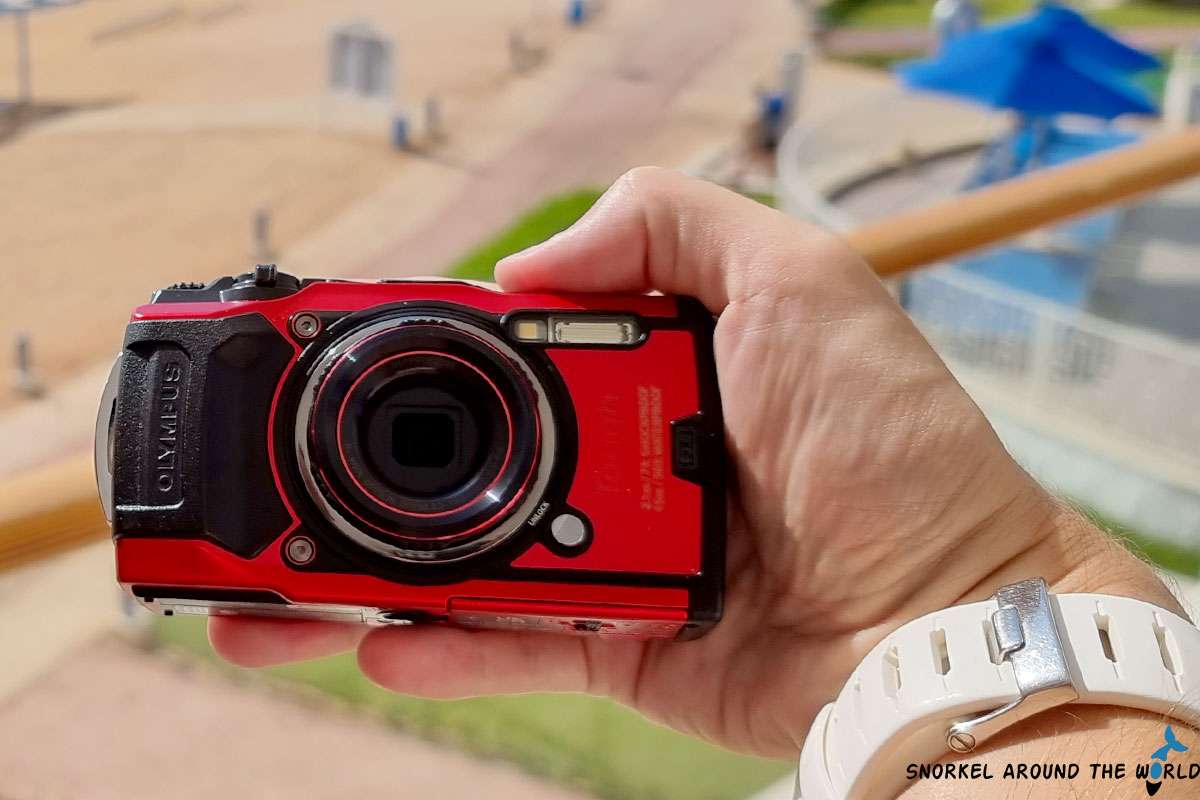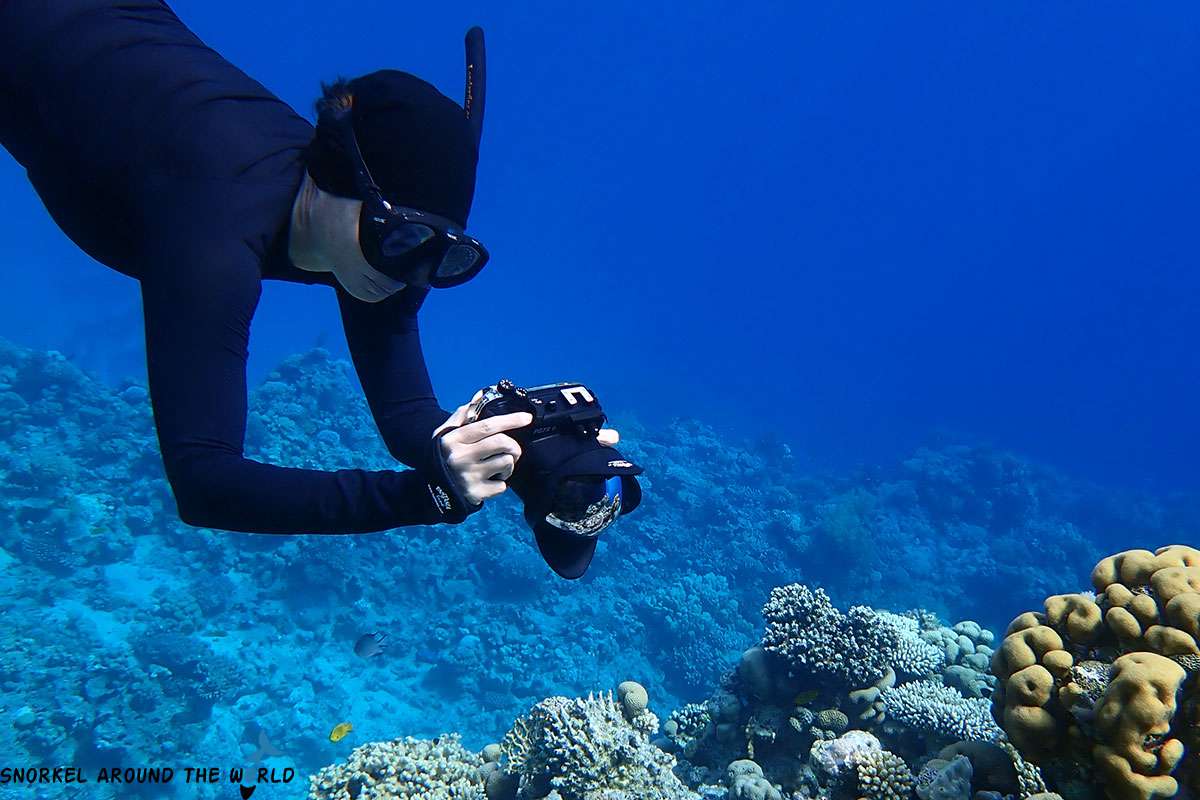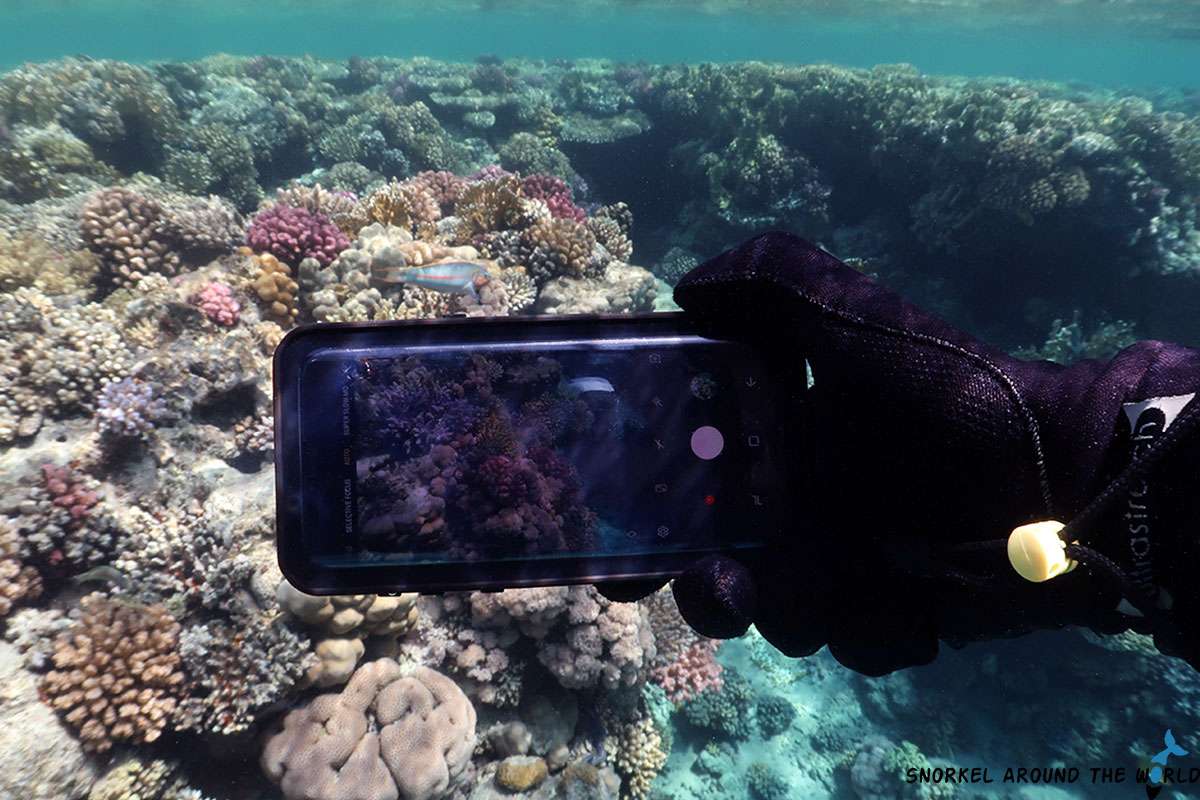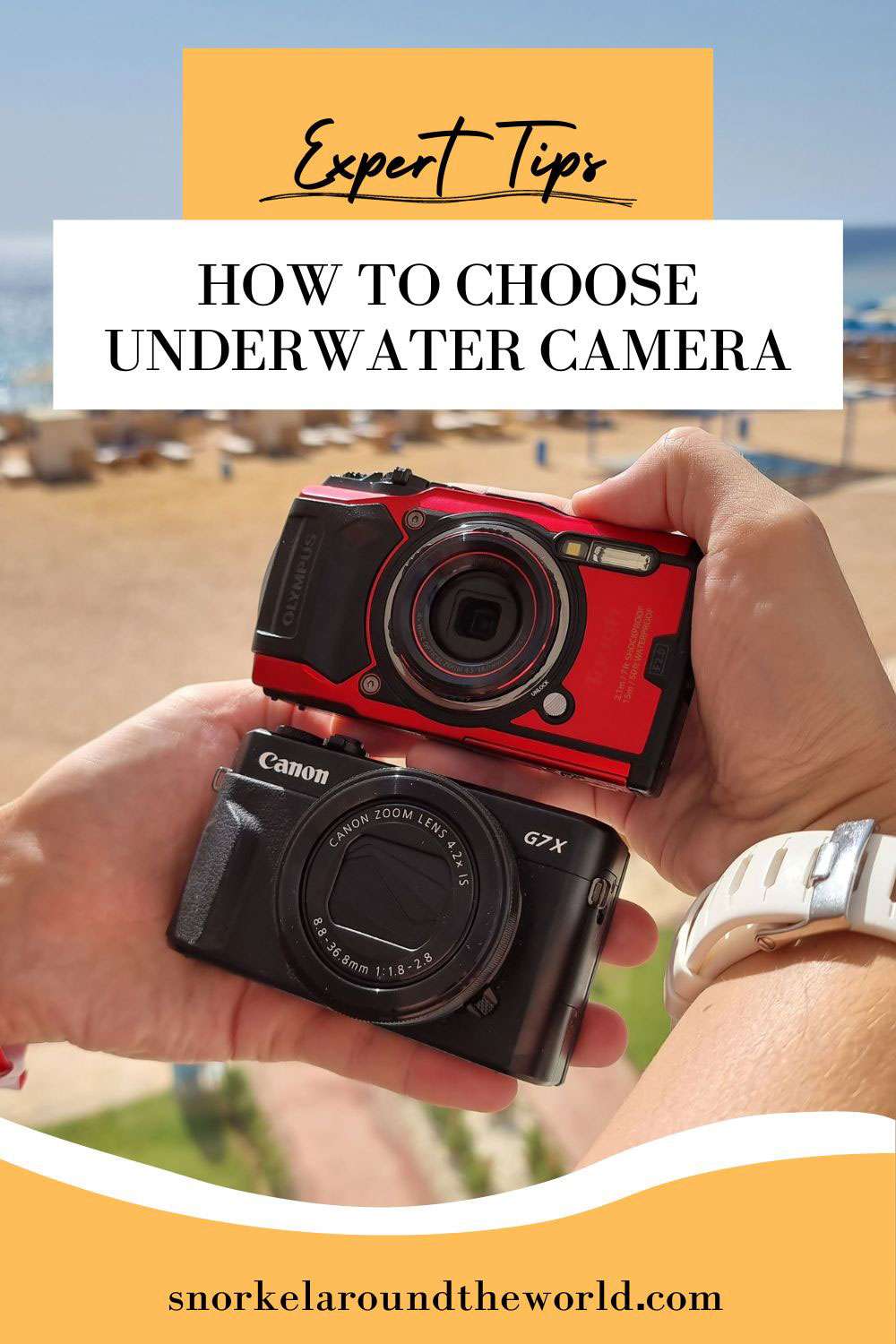How To Choose Underwater Camera For Snorkeling? – 7 Tips That Will Help
If you want to buy your first underwater camera for snorkeling or upgrade your current one, you may find the selection overwhelming. The waterproof camera market is enormous and doesn’t seem to stop expanding, with new models coming out every season, so you may want some help picking out the camera that will suit you best.
A good camera is essential if you want bright and clear underwater images, but you don’t need to buy the latest and most expensive models. We own and have tried many underwater cameras, so we know exactly that the process of finding the one that will be just right for you can be stressful. Luckily, there are some factors to understand and features to look at that help with the decision and this is what we will explain in this article!
What Type Of Underwater Cameras Can You Choose From?
First things first, let’s get familiar with the types of underwater digital cameras, clarify what type of models you can choose from, and what the differences are between them.
Waterproof camera
The category of waterproof cameras includes rugged, weatherproof point-and-shoot cameras that have a fully-sealed body so they can withstand dirt and water without an extra protection case or cover.
Another huge advantage of such cameras is that they feature pre-set UW modes, so you don’t need to be a professional to take sharp, natural images; the camera will make the necessary adjustments when in underwater mode.

Waterproof cameras come with various depth limits. Generally speaking, models in the lower price range are submersible up to 26-32ft (8-10 m), making them an ideal choice for snorkeling and shallow water diving.
Professional, high-end waterproof cameras can be used up to depths of 49-100ft (15-30m) without a housing. You can find the waterproof rating on the camera’s body and/or in the manual. Always check this information before taking any camera underwater and never go beyond the depth limit, as you can damage it.
Camera with underwater housing
Standard digital cameras are not waterproof but can be used underwater in a fitting underwater housing. Commercial underwater camera housings can be used up at depths up to 130 ft/40 m, some models even up to 195ft/60m.
The advantage of a camera-housing combination is that it delivers the best image quality; you can create complete underwater photography systems by adding various accessories such as video lights, strobes, or flashes.

As a drawback, a camera-case combination is more expensive than those models that are waterproof just as they are, without any housing. A quality case can be as expensive as the camera itself, therefore, these setups are recommended for underwater photographers and those wanting professional images and videos.
Action Camera
Action cameras are popular among travelers; they are compact, durable, and easy to use. Plus, many new models are waterproof up to certain depths without any additional protection case or cover, so you can take them snorkeling or doing water activities without worrying about damages.
However, they are still better at recording videos than taking photos; therefore, if your main focus is video production, choosing an action camera is a good decision, but if you prefer taking photos, consider buying a standard camera.
Our to-go snorkeling action camera is a GoPro because it delivers the highest image quality. Currently, we own a Hero 12 Black and love it. It is a bit pricey, though, so you can look at budget-friendly GoPro alternatives that are more affordable and provide good-quality footage.
Smartphone

Smartphones went through major quality improvements when it comes to image quality. We started to use our mobile as an all-rounder media device; we work, socialize, watch videos on it, and for many of us, it replaced our old camera too.
These days’ top smartphones take fantastic photos and record cinematic videos, so you can rightfully say that you want your underwater images to have that quality too.
If you want a straight answer to the question ‘Can you go snorkeling or diving with your phone?’ then it is a clear yes; however, you must put it in a proper protective case.
Don’t let the advertisement ‘waterproof’ fool you. Although top-category phones can be submerged underwater up to a certain depth for a certain time, this usually applies to fresh water only. Using it in salty water can cause damages not covered by warranty. Therefore, you must get a fitting smartphone underwater housing that will make it waterproof up to 130-195 ft (40-60m), depending on the model.
How To Actually Choose An Underwater Camera – Questions That Will Help
Now that you know what type of camera you can choose from, it is time to jump to the next step: the guide to picking out an underwater camera. Since it will be one of the most expensive and longest-lasting pieces of your equipment, it is good to spend some time researching and not impulse buying.
Read and answer the following questions to make your decision-making easier and help you find one that will suit you best and meet your expectations. These will help specify your needs:
Who will use the camera?
Will you be the only one using the camera, or will it be more of a family-used device? This is an important point to clarify since if more people will use it, you must consider others’ needs and opinions too and choose accordingly.
Generally, we think that small kids shouldn’t use adults’ high-end cameras. Not that because they can’t take good photos or don’t know how to take care of an expensive camera, but because serious cameras are built in a way that might not be easy to use for them; think about simple things like too small buttons or a tricky menu.
But here is our advice; get your kids their own camera. There are many waterproof cameras for kids that are affordable, simple to use, and capture good images. I am sure that the little ones will love having their own camera and experiencing underwater photography!
How often will you use the underwater camera?
Are you an enthusiastic snorkeler who is passionate about taking UW photos? Then, we suggest getting an advanced camera that allows you to try various settings and play around with its functions to improve your underwater photography skills.
But, if you are a beginner or someone who uses the camera once or twice a year, buying the best available model is unnecessary; choose a simpler, affordable one that has pre-set modes so you don’t need to study settings or have a deep knowledge in photography to be able to get clear images.
Don’t forget that underwater cameras and housings require special maintenance between each use. Please do not skip it; it can shorten the device’s lifetime.
What image/video quality do you expect?
The quality of the images that a camera is capable of shooting is always a key factor. So, determine what do you want to use the photos/videos or?
Do you want them just to have memories you can look back at and show your family and friends? Or do you want to use the photos/videos for professional purposes, share them on social media, or illustrate articles? The more important the image quality is, the more professional the camera you need to choose.
How deep do you want to take the camera?
Waterproof cameras come with various depth ratings; some are suitable for snorkeling only, but some are certified up to scuba diving depths. If you want to use your underwater camera while diving, choose one with a rating of 98ft/30m or one that has an extra housing that makes it safe to use at greater depths too.
Do you need extra functions (GPS, compass, level gauge etc…)?
Modern waterproof cameras are not only waterproof but also weatherproof, so they are ready to go with you on wild adventures. They usually come with extras, including many helpful functions such as a compass, GPS, level gauge, thermometer, action track sensors, etc… which come in handy during outdoor adventures.
The built-in features vary by manufacturer and model; check these before purchasing so that you will get all the functions you need.
What is your budget?
Generally, a medium-range snorkeling camera costs 150-200 USD, while a high-end underwater camera costs about 400-500 USD. Therefore, you should decide how much money you want to spend on it; like this, it is easier to shortlist the ones you will need to look at.
We think it is worth spending a bit more on a good model from a trusted camera manufacturer with an extended warranty and a professional repair service background.
What do others recommend?
Recommendations are powerful and nowadays’ online platforms make it easier than ever to get advice on almost any topic. This can shorten the time you spend on research significantly.
Find trusted sources; look for websites or forums where people compare different cameras, showcase actual photos they took with the different models, and share the pros and cons.
Don’t be shy and ask for advice; talk to your friends or other fellow ocean explorers you meet at the beach or while on vacation. Contact an underwater photographer, someone who posts images you like, or simply walk into a dive shop. You will not only get expert tips but maybe even some guidance on how to improve your underwater images. If you like the photos and images we post, you can contact us too; we are happy to help!
Conclusion
The selection is pretty wide on the underwater camera market, so finding the best model might be complicated. There is no perfect underwater camera, but there is a suitable one for everyone.
- don’t buy a camera without research
- set a budget; there are cameras in all price categories, so setting up a budget helps limit the choices
- specify your needs: having a clear vision
- if you feel lost in the ocean of information, read others’ recommendations and ask advice from experts
We hope you found helpful tips here for finding your next underwater camera. If you are interested in what models we consider the best, you can continue with our Waterproof camera recommendations for snorkeling.
Inspired? Pin it!






